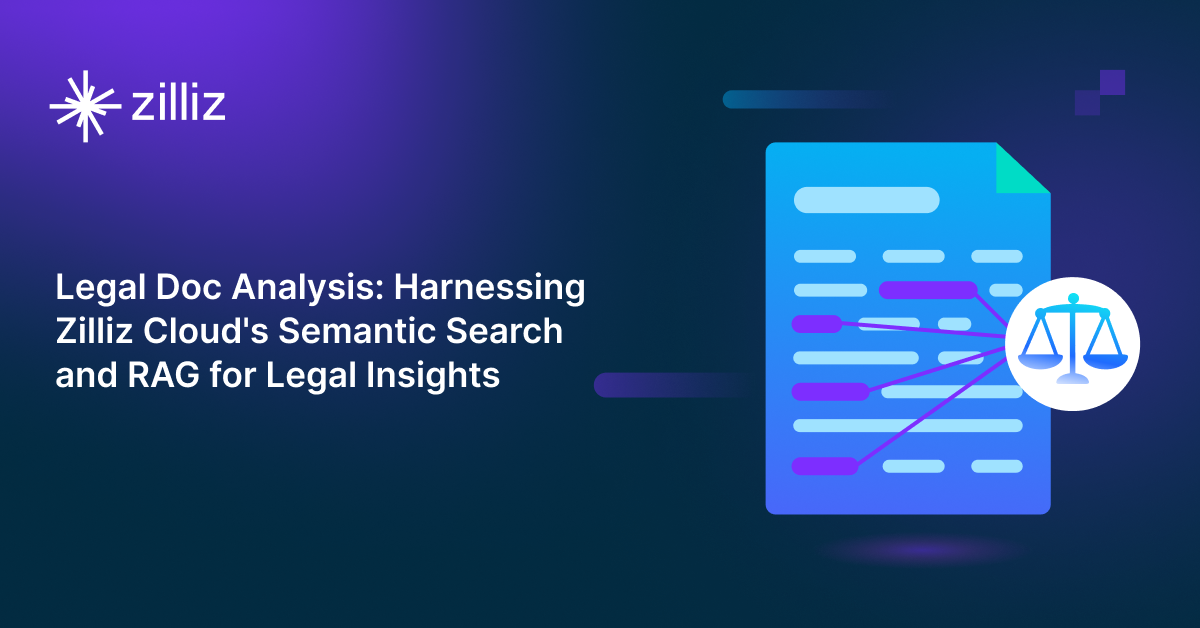Milvus/Zilliz + Surveillance: How Vector Databases Transform Multi-Camera Tracking
In the world of video surveillance, tracking objects across multiple cameras has traditionally been one of the most challenging problems to solve. As people move between camera views in spaces like retail stores, warehouses, and airports, maintaining their identity becomes increasingly difficult. Vector databases, particularly Milvus, are helping this space by enabling fast, accurate similarity searches across visual data—fundamentally changing how multi-camera tracking systems operate.
The Persistent Challenges of Multi-Camera Tracking
Anyone who has worked with surveillance systems across large spaces understands the fundamental challenges:
Cross-Camera Identification: Matching the same subject across multiple camera feeds with different angles and views requires sophisticated algorithms and AI models.
Identity Preservation: Maintaining consistent identities as objects move between camera views is critical—without it, tracking breaks down completely.
Occlusion and Disappearance: Objects frequently disappear temporarily or become partially obscured, making continuous tracking difficult.
Real-Time Processing Requirements: Effective surveillance demands subsecond latency and high throughput for live data streaming, multi-stream fusion, and anomaly detection.
Privacy Concerns: Systems must anonymize personal data while still enabling effective monitoring to comply with regulations.
Scalability: As spaces grow larger, the system must scale to handle thousands of cameras and subjects through distributed computing and cloud-native architecture.
Traditional approaches using rule-based tracking or simple feature matching frequently fail in complex environments, leading to fragmented tracking and inconsistent identities.
How Vector Databases Transform the Problem
Vector databases like Milvus address these challenges through a fundamentally different approach to object identity. Rather than using simple rules or metadata matching, vector databases enable similarity-based identity matching with metadata filtering, full text search and more:
The Vector Representation Advantage
When an object appears in a camera's field of view, deep learning models extract distinctive visual features and encode them as high-dimensional vectors. These mathematical "fingerprints" (typically 128-2048 dimensions) capture the object's essential visual characteristics. Even when appearance changes dramatically between cameras, the underlying vector representation maintains similarity. This approach creates a powerful foundation for re-identification across different camera views.
Milvus: Purpose-Built for Similarity Searching
Milvus excels in the multi-camera tracking context for several key reasons: Ultra-Fast Similarity Search: Specialized indexing structures (HNSW, IVF, Nvidia cuVS, etc.) enable sub-second queries even with millions of vectors; Approximate Nearest Neighbor (ANN) Algorithms: Balance accuracy and performance for real-time applications; Scalable Architecture: Distributed processing capabilities handle the computational demands of comparing vectors across numerous cameras; Flexible Metric Options: Support for different distance metrics (Euclidean, cosine, dot product) to optimize matching for specific visual features.
Milvus: A Comprehensive Vector Database for Surveillance
Open Source Milvus provides a powerful suite of capabilities that make it ideal for multi-camera tracking systems:
Vector Storage and Similarity Search: Stores high-dimensional feature vectors and handles similarity searches to maintain identity across camera views
Embedding Lists: Supports embedding lists that can represent position sequences, time sequences, or any set of embeddings with strong internal relationships—perfect for preserving temporal sequences in video analysis
Range Search: Improves result relevancy by defining an "annular region" with inner and outer boundaries, allowing systems to find "similar but not identical" appearances—crucial for matching the same person across different camera angles
Filtered Search: Combines vector similarity with metadata constraints (like buildings, floors, or camera zones) to narrow results to vectors that match specific criteria
Grouping Search: Aggregates results by specified fields to improve result diversity, ensuring the system identifies unique individuals rather than multiple appearances of the same person
Hybrid Search: Combines results from multiple vector fields, enabling multimodal search that can integrate facial features, clothing attributes, and movement patterns for more robust identification
This comprehensive feature set enables Milvus to handle the complex requirements of multi-camera tracking, from maintaining temporal relationships between sequential frames to filtering results based on physical constraints of how people move through spaces.
Advanced Tracking Capabilities with Milvus
Milvus's diverse search capabilities unlock sophisticated tracking scenarios that were previously impossible with traditional systems:
Identity Maintenance Across Challenging Transitions
When a person exits one camera's view and enters another, their appearance can change dramatically due to lighting, angle, and distance. Milvus addresses this with: Range Search: By defining appropriate similarity thresholds, the system can find matches that are similar but not identical, accommodating appearance variations; Multi-vector Search: Combining different feature vectors (face, clothing, gait) enables identification even when some features are obscured or changed.
Time-Aware Tracking
People's movements through physical spaces follow physical constraints. Milvus leverages this with Filtered Search: Apply time window constraints to only consider appearances that could realistically be the same person based on walking speed; Embedding Lists track sequential appearances to establish movement patterns that help distinguish between similar-looking individuals. Embedding lists are coming in Milvus 2.6 in just a few weeks!
Identity Resolution in Crowded Scenes
In busy environments, traditional tracking often breaks down. Milvus provides Grouping Search: Groups search results by values in a specified field, improving diversity by returning the most similar entity from each group rather than multiple results from the same group; Filtered Search: Apply metadata filtering conditions (like time windows, clothing colors, or carried items) to narrow the search scope before conducting ANN searches, ensuring only entities matching specified criteria are considered. These capabilities enable security teams to maintain continuous tracking even in challenging environments with dense crowds, complex camera layouts, and varying lighting conditions.
Real-World Applications and Benefits
This approach to multi-camera tracking creates opportunities across industries:
Retail Analytics: Track shoppers from entrance to exit, even as they move between floors and departments, enabling complete customer journey analysis. Path analysis identifies common patterns and helps optimize store layouts based on actual customer movement. Conversion insights allow retailers to compare browsing patterns between purchasing and non-purchasing customers, revealing what influences buying decisions.
Warehouse Optimization: Worker movement analysis identifies inefficient patterns and helps optimize workflow within facility operations. Equipment tracking monitors forklift and equipment usage patterns across large facilities, improving resource allocation and maintenance scheduling. Security monitoring detects unauthorized access or unusual behavior patterns, enhancing facility safety and protecting inventory.
Transportation Hubs: Flow optimization reduces congestion by understanding how people move through facilities, creating more efficient passenger experiences. Security enhancement maintains continuous tracking of individuals of interest across multiple camera zones without gaps in coverage. Service improvement identifies bottlenecks and helps optimize staffing based on passenger movement patterns, leading to reduced wait times and improved customer satisfaction.
Building Your Own Milvus-Powered Tracking System
If you're interested in implementing vector-based tracking with Milvus, NVIDIA's multi-camera tracking reference workflow provides an excellent starting point. Their comprehensive solution demonstrates how to integrate Milvus into a complete tracking architecture.
The workflow shows how to:
Process camera feeds to extract object features and convert them to vectors
Store and query these vectors in Milvus for identity matching
Leverage Milvus's new capabilities for spatio-temporal tracking
Visualize tracking results through intuitive interfaces
You can find NVIDIA's complete implementation guide at their Metropolis documentation site, which includes deployment instructions, architecture details, and customization options.
Conclusion: The Future of Surveillance is Vector-Based
Vector databases like Milvus represent a fundamental shift in how we approach multi-camera tracking. By leveraging Milvus's comprehensive search capabilities—from range search to multi-vector search, grouping search to filtered search—surveillance systems can maintain continuous identity across complex environments with unprecedented accuracy.
What makes Milvus particularly powerful for surveillance applications is the combination of these capabilities. Range search helps accommodate appearance variations between cameras. Embedding lists preserve temporal sequences for movement analysis. Filtered search applies physical constraints to narrow candidate matches. Grouping search ensures result diversity for accurate person counting. Together, these features create a complete solution for the unique challenges of multi-camera tracking.
As vector database technology continues to advance, we can expect even more sophisticated surveillance applications that combine these diverse search capabilities for even greater accuracy and insight. For organizations managing large physical spaces, Milvus provides the foundation for a new generation of tracking systems that can finally deliver on the promise of seamless cross-camera identification.
- The Persistent Challenges of Multi-Camera Tracking
- How Vector Databases Transform the Problem
- Advanced Tracking Capabilities with Milvus
- Real-World Applications and Benefits
- Building Your Own Milvus-Powered Tracking System
- Conclusion: The Future of Surveillance is Vector-Based
Content
Start Free, Scale Easily
Try the fully-managed vector database built for your GenAI applications.
Try Zilliz Cloud for FreeKeep Reading

Bringing AI to Legal Tech: The Role of Vector Databases in Enhancing LLM Guardrails
Discover how vector databases enhance AI reliability in legal tech, ensuring accurate, compliant, and trustworthy AI-powered legal solutions.

Legal Document Analysis: Harnessing Zilliz Cloud's Semantic Search and RAG for Legal Insights
Zilliz Cloud transforms legal document analysis with AI-driven Semantic Search and Retrieval-Augmented Generation (RAG). By combining keyword and vector search, it enables faster, more accurate contract analysis, case law research, and regulatory tracking.

How AI and Vector Databases Are Transforming the Consumer and Retail Sector
AI and vector databases are transforming retail, enhancing personalization, search, customer service, and operations. Discover how Zilliz Cloud helps drive growth and innovation.
